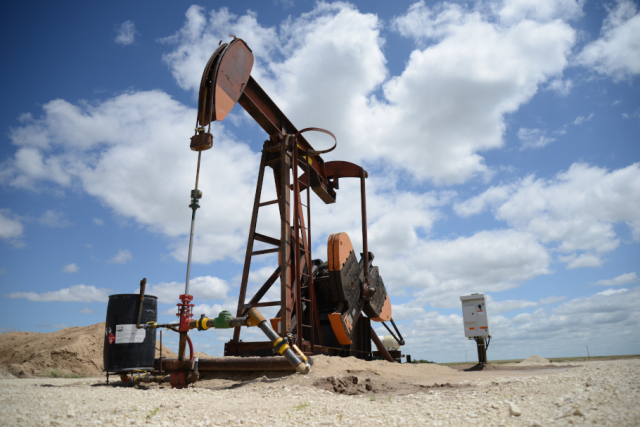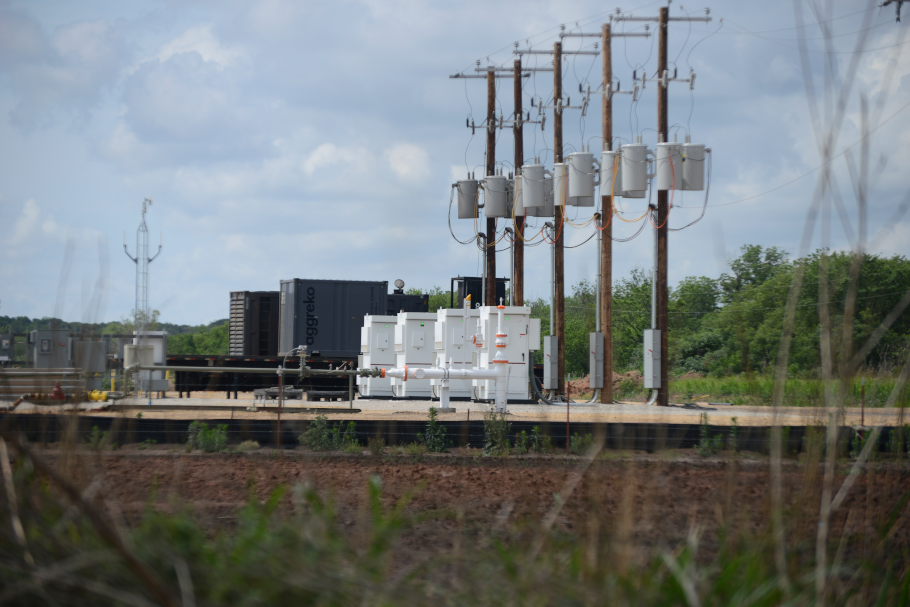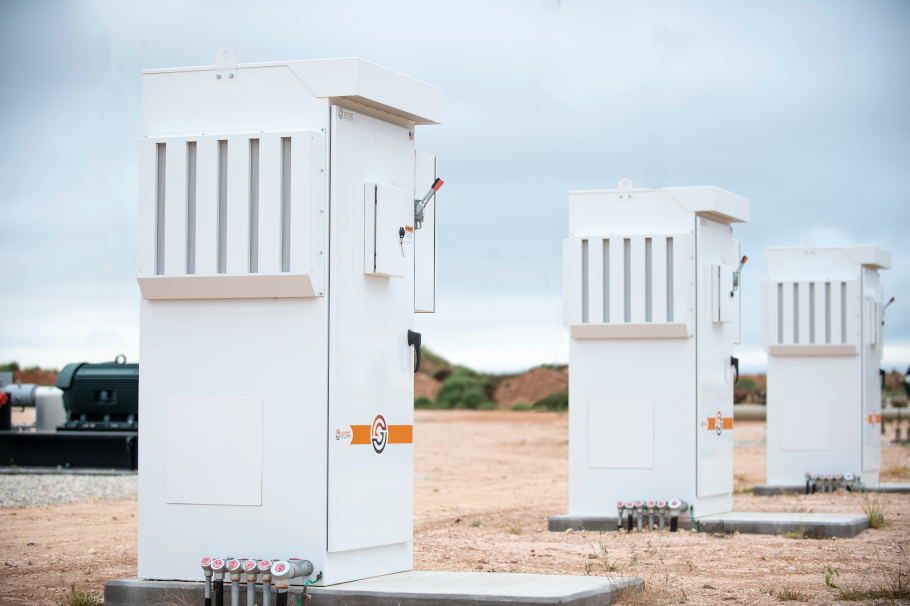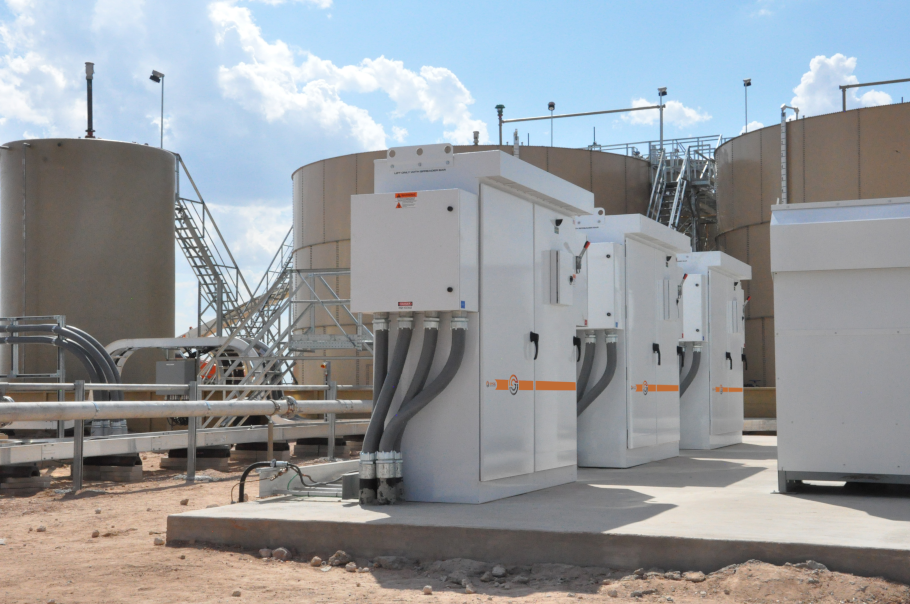
A VFD controls a rod pump. (Source: SPOC Automation)
[Editor's note: A version of this story appears in the September 2020 edition of E&P Plus. Subscribe to the magazine here.]
At the start of the year, few predicted the turmoil that 2020 would inflict on the oil and gas industry. Oversupply and the collapse of demand created historic stresses on oil and gas prices. Long-term predictions for oil prices remain decidedly unoptimistic, and this low-price environment is the industry’s foreseeable future.
In response, producers are looking to squeeze every dollar from their budgets in both capex and LOE. Everyone it seems, producers as well as suppliers, are in a fight to survive.
It requires an enormous amount of energy to extract and move a barrel of oil or gas from the ground. In fact, energy costs are a huge percentage of most producers’ LOE. According to the U.S. Energy Information Administration, the oil and gas business consumes 2.5% of all distilled petroleum products. Anything that can lower those costs directly impacts the bottom line.
Another significant cost is the inefficiency of the people tasked with monitoring and maintaining the system: the traditional pumpers. How many thousands of pumpers are driving around the West Texas desert or the plains of North Dakota in their pickup trucks checking every well site, collecting production data but not necessarily doing anything to increase production? All those miles. All those hours on backcountry lease roads and only occasionally putting their expertise to work. The traditional way of managing wells is an incredibly inefficient process. Automation through the use of variable frequency drives (VFDs) is rapidly changing the equation.
Driving up efficiency, driving down costs
In response to the new pervasive low-cost environment, producers are clearly pushing for the greater integration of automation technology into both upstream and midstream applications in a bid to push the threshold for profitability to attainable levels. For years, automation has provided a sustainable way to lower lifting costs. But when oil prices are high, producers tend to only worry about pumping as much and as fast as possible, so not everyone felt the need to integrate technology into their processes. But when oil prices linger at historically low levels, those cost savings might be the difference between pumping profitably and losing money on every barrel—or between surviving and going out of business.

One of the most significant benefits that VFDs bring to the oil field is the reduction of energy costs required to run each pump. By reducing kWh usage, eliminating power factor penalties and helping producers avoid peak-demand charges, VFDs can save between 10% and 35% on energy costs per pump. That alone is compelling for most producers.
The benefits of automation go beyond energy savings, however. The VFD does more than monitor pump and well conditions; it automates the mechanical response to those changing conditions.
Obviously, the oil field is hard on mechanical equipment. The heat, cold and dust all take a toll as well as the incredible stresses at play in the typical pumping system. At any given time, thousands of things can go wrong, from overheated bearings to shaft alignment to slowing flow rates. Drive automation recognizes these issues and can initiate either automated or human responses before a small issue becomes the kind of larger problem that shuts down production.
So, for instance, if a rod pump hits pump off, the VFD can slow the motor, slowing the pump, rather than shutting it down completely, allowing the reservoir to refill before returning to normal production speed. The producer maintains production and also eliminates the significant costs of shutting down and restarting the pump. By slowing and not stopping, sand is maintained in the fluid column, reducing pump damage. VFDs also eliminate the mechanical stresses that inevitably lead to expensive workovers. By slowing the pump production rate to match the reservoir inflow rate, system stresses go down and equipment life expectancy goes up. So assets run longer, they last longer and they require less unscheduled maintenance.

The next generation of drives, currently under development, will amplify all of that by incorporating a number of new innovations. Historically, pumps run on either gas engines or electric motors.
Innovations under development, though, will allow producers to incorporate both fuel types in a hybrid solution, allowing them to alternate in real time between fuel types to take advantage of the most cost-efficient source. In many applications, these hybrid drive technologies go beyond saving energy. They also reduce CO2 and other emissions as well as noise and vibration, an important benefit to companies pushing toward carbon-neutral goals.
Next-generation drives will integrate more sensors into the process to provide more production data and more insights into the performance of each pump and each well. These data will be critical elements as more companies push predictive maintenance and other automation initiatives throughout their processes, making the drive the hub at the pump level.
Another innovation under development is the electrification of the drive turning the drive into a power source, storing power and running off of a battery during times of peak electrical charges or source anomalies. These innovations will increase production by decreasing the idle time of the pump.
These data will inform better production decisions, allowing more nuanced automated responses to changing conditions. The next generation of drives won’t just do what they are told in given circumstances; they will identify and “call for action” whenever an issue with the motor arises. So if a bearing or rotor is failing, the drive will identify the issue and either take action automatically or notify the pumper of the problem and the specific actions that they need to take.
Equally important, the enhanced data the drives will collect will inform better business decisions, helping producers make more profitable decisions on new investments and asset allocation.
It will change the way pumpers work. Because they have insights into the performance of each well, pumpers will increasingly schedule site visits to problem wells or to their most profitable fields. Their work becomes proactive; they move from an expense to part of the solution that keeps production running. Instead of being measured in wells managed, they can be measured in extra barrels produced. And then, by eliminating all of those thousands of unnecessary miles on the road, there is the ancillary benefit of helping the business run cleaner.

It is a reality in this business that people come and go. And with them, too often, goes a significant chunk of a company’s institutional knowledge, specifically knowledge about the performance of individual wells and entire fields. A drive with information being brought up to SCADA provides a historical record of every event related to every well. That record can be invaluable when making long-term plans and especially as technology pushes toward predictive failure initiatives.
The technology exists today to help producers do more for less. Innovations in oilfield automation will continue to drive down the viable profitability point, helping producers not just survive the new reality but thrive as well.
Recommended Reading
Eni Reports Discovery Offshore Mexico in Block 9
2024-07-10 - Italian energy giant Eni SpA announced a discovery at the Yopaat-1 EXP exploration well in the offshore Mexico Block 9 of the Cuenca Salina in the Sureste Basin, which potential up to 400 MMboe in place.
CNOOC’s Bohai Bay Well Achieves High Yield
2024-07-11 - CNOOC’s Bozhong 19-6 Condensate Gas Field D1 well, the first ultra-deep well in China’s Bohai Bay, is currently producing approximately 6,300 boe/d.
VAALCO Reports Increased Reserves After Svenska Deal
2024-07-16 - VAALCO acquired Swedish E&P Svenska’s 27.39% non-operated working interest in the deepwater Baobab Field in Block CI-40, offshore Côte d’Ivoire.
Southeast Asia NatGas Projects Could Unlock $100B Boom- Rystad
2024-07-17 - Southeast Asia's offshore gas industry is set for a $100 billion boom by 2028, driven by a flurry of final investment decisions by oil and gas majors and national oil companies, according to Rystad Energy.
Worley to Service BP’s Global Site Projects
2024-06-10 - BP and Worley’s collaboration plans to save an initial estimated $40 million over two years across BP’s sites where Worley holds a service contract.





